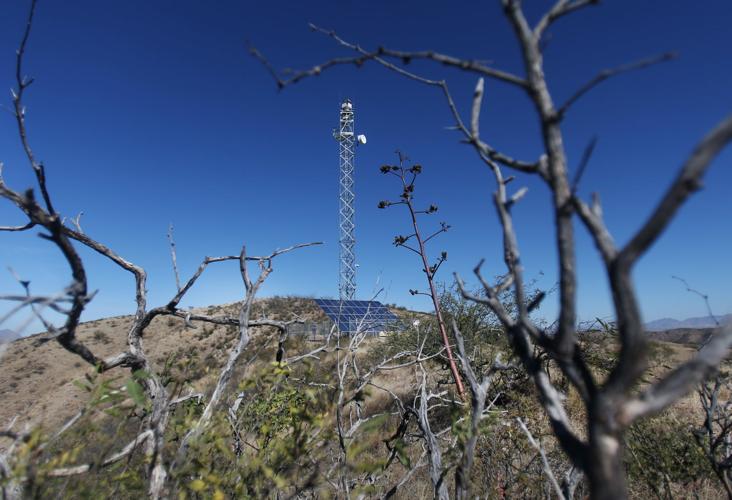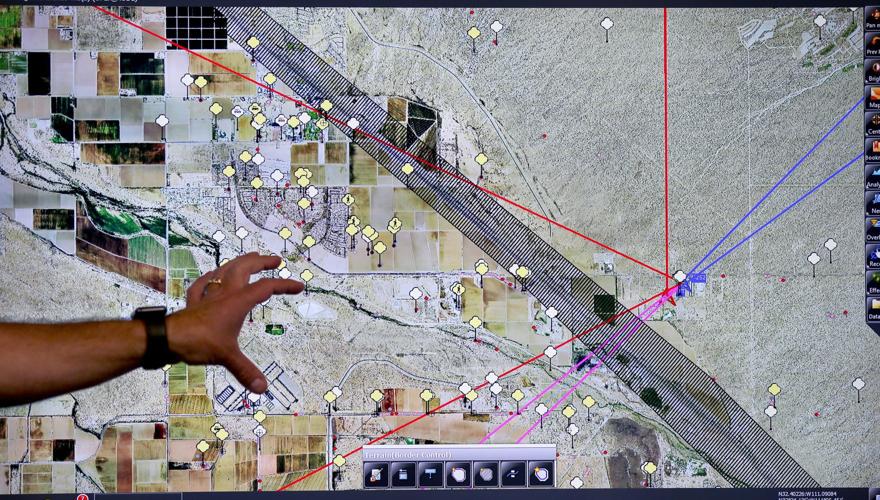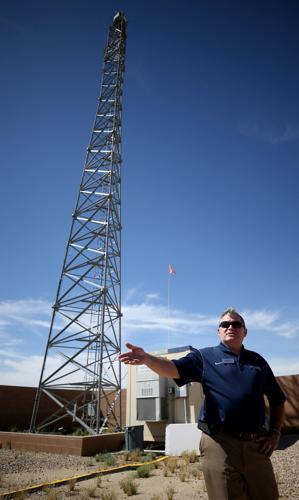People driving through the Tohono O’odham Nation on Arizona 86 may not see a series of towers that will dot the desert landscape like the telescopes on Kitt Peak, but surveillance towers will soon emerge along the US-Mexico border on the O’odham reservation.
The Tohono O’odham Nation challenged a Trump administration plan to build a border fence on the west side of its reservation, according to a brief filed July 19 in a federal lawsuit in Northern California.
Instead, the tribe allowed Customs and Border Protection to build surveillance towers that will monitor illegal traffic across the international border.
The Tohono O’odham Legislative Council passed a resolution March 22 to allow CBP to build roads and preparation sites for 10 surveillance towers to be built on the reservation, tribal documents show.
The Integrated Fixed Tower system will run along the reservation’s 62-mile border with Mexico.
The Tohono O’odham districts of Gu Vo and Chukut Kuk will contain the towers.
This project includes 30 miles of road and 89 low-water crossings, the U.S. Army Corps of Engineers procurement documents show.
The U.S. division of Israeli defense company Elbit Systems will build the surveillance towers at an estimated cost of $26 million, according to a news release from Elbit. Its towers currently operate near Nogales, Douglas and Sonoita.
The top of the tower will contain an assortment of sensor and communication devices, says a Department of Homeland Security environmental assessment study.
A laser illuminator will help Border Patrol agents pinpoint the location of “items of interest” in the vicinity. The company website says Border Patrol stations will be able to see video feeds in high-definition from each tower camera.
The DHS study says the towers cause minimal damage to the flora and fauna at the construction sites.
The study considered an assortment of other alternatives, such as drones, satellites, ground sensors and more agents, but found these methods could be logistically limited and potentially harmful to the environment.
With regard to the plan to build a tall fence that “ends at the Nation’s doorstep,” the O’odham government emphasized that tribal resources will pass “the breaking point.”
That is the wording in a court brief filed by the O’odham government in opposition to a plan to build 43 miles of tall border fence along the Organ Pipe Cactus National Monument and Cabeza Prieta National Wildlife Refuge.
The Tohono O’odham Nation already deals with heavy illegal traffic along its border with Mexico, the brief says. The tribal government spends $3 million annually on border security, which takes money away from its tribal police budget.
The tribal government supported the U.S. government’s decision to build vehicle barriers on their land. If the taller, pedestrian-barrier walls are built, they would funnel more illegal traffic into the reservation, the tribal government says in the brief.
They fear the wall will harm every cultural and environmental aspect of what is “sacred to the O’odham.” The wall could “militarize” the O’odham border land, says the court brief.






